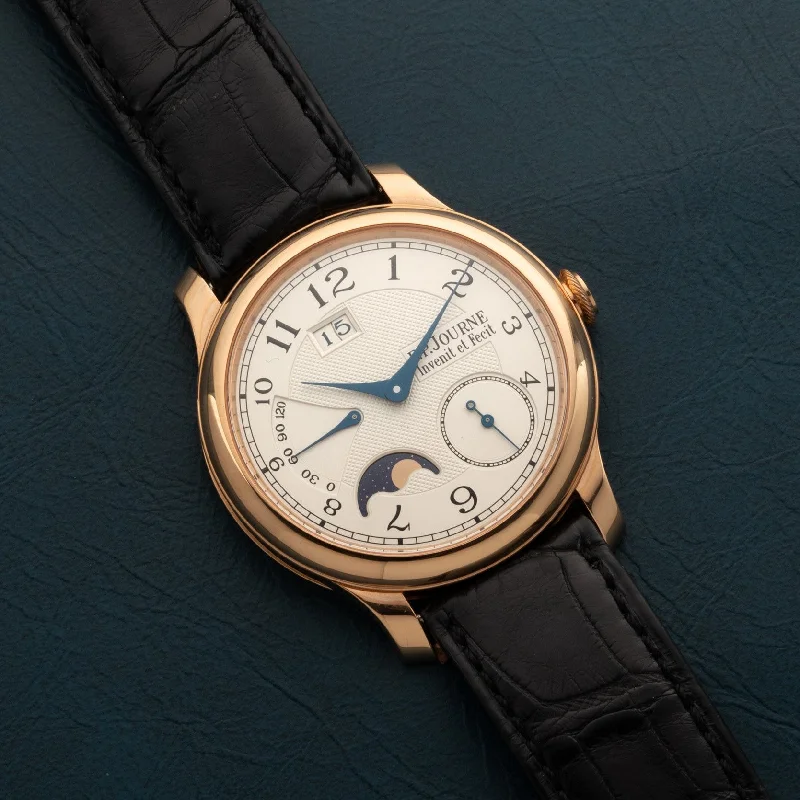So you’ve bought a Patek, maybe an Audemars Piguet, a few Rolexes or a Vacheron. You think you’ve seen it all and are ready to move on to more spicier horizons, and then you stumble on F.P. Journe.
Arguably the father of the modern independent watchmaking renaissance, Journe has paved the road for countless other small manufactures to make a name for themselves and share their creative eye with the industry. Journe’s legacy truly extends far beyond the watches he’s designed and executed.
Leaving school early to study horology, and working in his uncle’s clock repair shop, Journe discovered his knack for all things horology at a young age. Studying the works of Breguet and George Daniels, Journe had an eye for complication and classicism. These influences heavily impacted the look of Journe’s later creations.
After completing his studies and designing a number of commissioned pieces for private clients, Journe decided to set out on his own crafting wristwatches. Never slacking off, his earliest designs were tourbillons with constant force remontoirs — mechanically sophisticated and extremely difficult to execute. The ambitious young watchmaker was already punching above his weight, and by the time he started his own eponymous brand, collectors were already getting excited about Journe’s promise.
The Octa Automatique Lune, introduced in 2007, captures Journe’s command of both complicated watchmaking, and unique watch designs. A guilloché dial center, Journe’s own typeface on the dial, and a funky layout of complications all come together to present a luxurious, but distinctive dial look.
This Octa Lune is housed in a 41mm 18K rose gold case — one that sidesteps gimmicky design and construction, and instead leans on the simplicity of its curved case lines. The rose gold crown adds an ounce of flare with its beautifully detailed, rope-like motif and, in hand, there's buttery smoothness to the setting mechanism.
Adorned with a cream dial tone, this piece features a power reserve indicator at 9 o'clock, displaying its impressive 120 hours of power reserve. In actuality, the watch will remain running for closer to 180 hours. Journe only advertised 120 hours because he wanted to display power for the portion of reserve that the watch would maintain extreme timekeeping precision.
Fantastic.
A subsidiary seconds register positioned at 5 o'clock is balanced by a moonphase display at 7 o'clock, as well as a 'big date' window at 11 o'clock. A chemin de fer minute track encircles the periphery and all hands have been blued — once more calling upon the look of classic Breguet dials. While there’s certainly a lot going on, the dial doesn’t feel cluttered or messy. Actually, it feels pretty damn elegant.
While Journe has a number of more complicated offerings, even his simpler designs have his creative flavor undeniably evident with every minute detail. This watch is truly a celebration of the success of independent watchmaking and Journe’s role in perpetuating it.

